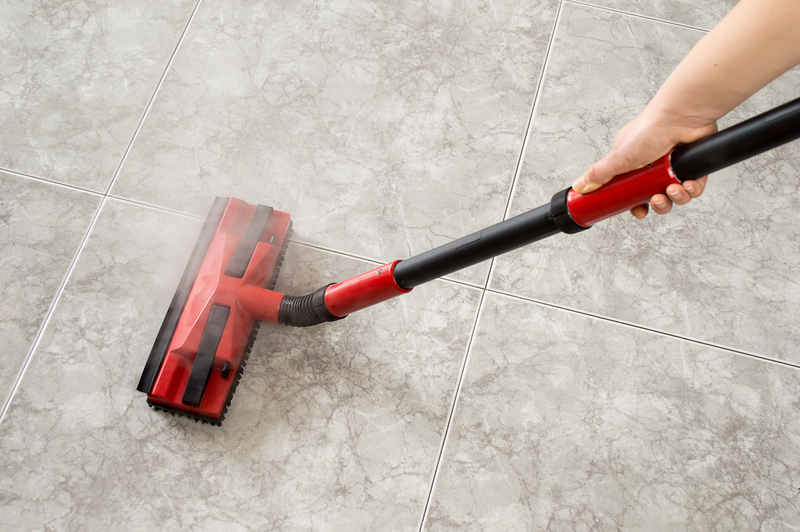Transform Your Space by Removing Damp Scents
Posted on 04/06/2025
Transform Your Space by Removing Damp Scents: An Essential Guide
There's nothing quite as disheartening as the musty, unpleasant smell of dampness in a space you want to feel cozy, fresh, and inviting. Damp scents can creep up in any environment, from bustling city apartments to countryside homes, diminishing comfort and even affecting your well-being. If you're struggling with persistent moisture odors, this comprehensive guide on how to eliminate damp smells will help you restore freshness and transform your space into an oasis.
Understanding the Causes of Damp Odors
Before diving into solutions, it's critical to understand what causes those stubborn damp scents. Knowledge is power, and when it comes to eradicating unwanted smells, tackling the root cause is more effective than masking the problem.
What Creates Unpleasant Dampness in Your Home?
- Moisture Accumulation: Excess moisture in the air or on surfaces, often from poor ventilation, leaks, or condensation, sparks the perfect breeding ground for odors.
- Mold and Mildew: Fungi thrive in damp environments. They not only create musty smells but can also damage structures and negatively impact your health.
- Poor Air Circulation: Stagnant air traps moisture and odors, increasing the intensity of damp scents in enclosed areas.
- Hidden Leaks: Plumbing issues or roof leaks can go unnoticed for a while, leading to persistent dampness and its associated smell.
- Neglected Cleaning: Dirt, dust, and organic material in dark, damp corners feed both odor and fungal growth.
The Health Risks of Living with Damp Odors
Beyond the unpleasantness, persistent dampness and musty smells can lead to serious health concerns. Allergies, asthma, and respiratory issues are aggravated by mold spores and mildew present in damp environments. Moreover, long-term exposure can weaken your immune system and cause chronic discomfort. Addressing damp odors promptly is crucial for both your property's integrity and your well-being.

How to Identify Sources of Damp Scents
To successfully remove musty smells, start by identifying where the problem originates. Diligence and attention to detail during your search will ensure a lasting solution.
Top Signs Your Space Has a Dampness Issue
- Persistent Musty Smell: A telltale sign of hidden mold or trapped moisture.
- Visible Mold or Mildew: Dark, fuzzy, or slimy patches on walls, ceilings, or floors.
- Peeling Paint or Wallpaper: Indicates moisture is seeping behind surfaces.
- Staining: Yellow, brown, or black stains, especially along corners or lower walls.
- Condensation: Water droplets on windows, pipes, or cold surfaces.
- Warped Wood: Swollen floorboards, window frames, or doors.
Common Problem Areas in Homes and Businesses
- Basements and Cellars: These spaces are naturally prone to humidity and inadequate air circulation.
- Bathrooms: Without proper ventilation, moisture lingers after showers and baths.
- Kitchens: Cooking and washing generate steam, which can condense on cooler surfaces.
- Attics: Often under-ventilated, allowing humidity to build up over time.
- Laundry Rooms: Damp clothing and appliances contribute to overall moisture.
- Closets and Cupboards: Limited airflow makes them hotspots for damp odors to develop unnoticed.
Effective Steps for Removing Damp Smells from Your Space
Eliminating damp scents requires a systematic, multi-step approach. Here's how you can refresh your space and keep it smelling clean and inviting:
1. Remove the Source of Moisture
- Fix leaking pipes, appliances, roofs, and windows promptly.
- Check basement walls and ceilings for cracks or poor insulation.
- Redirect downspouts and improve outside drainage to keep rainwater away.
2. Increase Air Circulation and Ventilation
- Open windows and doors regularly to let fresh air in and circulate.
- Use fans or exhaust systems in bathrooms, kitchens, and laundry rooms.
- Consider installing trickle vents or air bricks in problem areas.
3. Dehumidify the Environment
- Invest in a high-quality dehumidifier to reduce excess moisture in the air.
- Use moisture-absorbing crystals or pouches in closets and enclosed spaces.
- Monitor indoor humidity with a hygrometer and aim for levels between 30% - 50%.
4. Deep Clean Affected Surfaces
- Scrub mold and mildew from walls, tiles, and floors with bleach or vinegar solutions.
- Launder musty fabrics--curtains, cushions, bedding--in hot water with an odor-eliminating additive.
- Shampoo carpets and soften upholstery to remove hidden spores and stale smells.
5. Use Natural Odor Absorbers
- Place bowls of baking soda or activated charcoal in affected rooms to naturally trap and neutralize odor molecules.
- Try houseplants known for their air-purifying qualities, such as snake plants, peace lilies, and spider plants.
- Essential oils (like eucalyptus, tea tree, or lavender) can be diffused to mask lingering scents while providing antimicrobial benefits.
6. Regular Upkeep and Prevention
- Clean and vacuum regularly, paying extra attention to corners and hidden areas.
- Keep bathroom and kitchen surfaces dry after use.
- Rotate clothes and items in closets to prevent the buildup of moisture and dust.
- Store items on shelves rather than directly on potentially damp floors.
Transformative Home Improvements to Eliminate Damp Odors
For chronic or recurring issues, taking steps to structurally improve your space can make a significant difference in controlling moisture and banishing damp smells for good:
Waterproofing and Insulation Solutions
- Seal foundation walls and apply waterproofing membranes to basements.
- Upgrade windows and doors to double-glazed or triple-glazed options, reducing condensation risk.
- Insulate pipes to prevent condensation and subsequent mold growth.
Improving Drainage and Exterior Protection
- Clean gutters and downspouts regularly to ensure proper runoff.
- Grade soil around your property so water flows away from the foundation.
- Install sump pumps in prone basements for added peace of mind during heavy rain.
Professional Mold Remediation
For severe infestations or persistent damp scents, hiring a certified mold remediation specialist ensures safe removal and prevents regrowth. Professionals have access to advanced drying, cleaning, and sealing equipment that can restore even the most affected spaces.
Choosing the Best Products to Remove Damp Scents
The marketplace is filled with odor eliminators, but not all products are created equal or suitable for every scenario. Here's what to look for:
- Dehumidifiers: Opt for energy-efficient models with the right capacity for your room size.
- Air Purifiers: HEPA and carbon filters capture mold spores and odor-causing particles.
- Natural Absorbers: Bamboo charcoal bags or silica gel are effective in closets and small spaces.
- Mold Cleaners: Non-toxic, anti-fungal sprays are best for homes with pets or children.
- Essential Oil Diffusers: Create a pleasant aroma while potentially reducing airborne microbes.
Frequently Asked Questions About Removing Damp Smells
Q: Can you permanently remove damp scents?
Yes, if you address the underlying moisture problem and clean affected areas thoroughly, musty odors can be gone for good. Ongoing prevention is key to stopping recurrence.
Q: Are air fresheners a good solution?
Air fresheners and sprays only mask odors temporarily. For lasting results, tackle the root causes: moisture, mold, and poor ventilation.
Q: How quickly can I expect to see improvement?
Once the main issue is resolved, you may notice improvement in air quality and odor within a few hours to days. Deep cleaning and dehumidification accelerate the process.
Q: What household items can help remove damp smells?
- Baking soda: Absorbs odors and can be sprinkled onto carpets before vacuuming.
- Vinegar: Cuts through musty smells on hard surfaces and soft furnishings.
- Coffee grounds: Effective at absorbing airborne odors in tight spaces.

Maintaining a Fresh, Inviting Space After Removing Damp Odors
After eliminating damp scents, the right maintenance routine can keep your home or office smelling fresh year-round:
- Install humidity monitors and respond quickly to fluctuations.
- Ventilate daily, especially after cooking or bathing.
- Clean regularly and don't let clutter accumulate, especially in low-traffic zones.
- Inspect for leaks biannually, especially before and after rainy seasons.
- Consider protective coatings for vulnerable areas like basements and attics.
Conclusion: Create Your Comfortable, Fresh Environment
If you long to transform your space into a clean, vibrant haven, removing damp scents is an essential first step. By understanding the causes, identifying trouble spots, employing thorough cleaning techniques, and establishing new maintenance habits, you can reclaim your environment and safeguard your health. Remember: persistence and prevention are your best allies. Take the time today to protect your home from moisture and musty smells--the result is a fresh, confident space you'll love for years to come.
Say goodbye to damp odors and hello to comfort!


